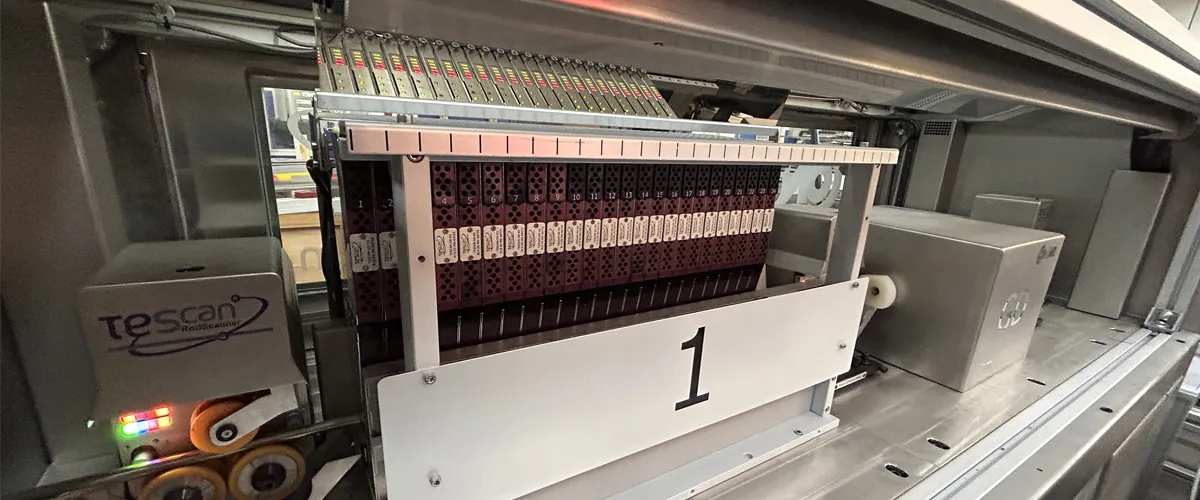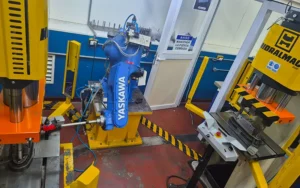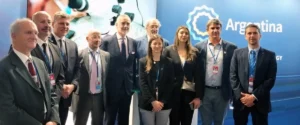At CONUAR, we apply advanced techniques including passive gamma scanning, eddy current testing, and magnetic permeability measurement to ensure the enrichment, safety, and reliability of every nuclear fuel rod destined for SMR and power reactor applications.
The New Landscape of Nuclear Fuel for SMRs
The global nuclear industry is undergoing a period of accelerated transformation. The development and deployment of Small Modular Reactors (SMRs) are redefining the strategies for nuclear fuel design, manufacturing, and verification.
Unlike large-scale reactors, SMRs require an optimized core design that maximizes efficiency, ensures a uniform axial and radial power profile, and maintains safety throughout the operating cycle. This challenge demands not only advanced engineering in fuel rod and fuel assembly design, but also rigorous quality control to guarantee that every component meets the most stringent specifications.
Within this context, verifying uranium enrichment and ensuring the correct incorporation of burnable poisons—such as gadolinium oxide—are critical. Even minimal deviations in these parameters can impact reactor performance, cycle length, and operational safety.
At CONUAR, we implement state-of-the-art non-destructive inspection and analysis technologies, including passive gamma scanning, eddy current testing, and magnetic permeability measurement, to ensure that each fuel rod meets the highest international standards.
SMR Nuclear Fuel Design: Objectives and Challenges
1. Uniform Power Profile
Maintain a homogeneous power distribution within the core, both axially and radially, to maximize reactor efficiency and avoid localized overheating.
2. Extended Fuel Cycle Life
Optimize reactivity management to enable longer operating cycles without compromising safety.
3. Reduction of Operating and Refueling Costs
Design fuel assemblies that minimize the number of refueling operations and maintenance interventions.
Core Design Strategies for SMR Fuel
Variation in Fuel Rod Enrichment
Within a single fuel assembly, not all rods have the same uranium enrichment level. Even within a single rod, enrichment may vary along its axial length to control the power distribution in the reactor core.
This stepped enrichment design allows for:
- Avoiding power peaks in specific regions
- Improving the burnup efficiency of the fissile material
- Extending core life before refueling
In manufacturing, this variation is achieved through precise control of the uranium-235 (U-235) loading in each section of the rod.
Use of Burnable Poisons: Gadolinium Oxide and Others
Burnable poisons are neutron-absorbing materials deliberately introduced into the fuel to control the initial core reactivity.
Gadolinium oxide (Gd₂O₃) is one of the most widely used due to its high neutron capture cross-section and gradual depletion during reactor operation.
Its incorporation enables:
- Reduction of excessive initial reactivity
- Maintenance of a stable safety margin throughout the cycle
- Minimization of the need for additional control rods
The correct amount and distribution of gadolinium oxide are critical factors in fuel performance.
Passive Gamma Scanning
This technique measures the natural gamma radiation emitted by the isotopes in the uranium without irradiating the sample.
Two energy windows are analyzed:
- Primary window: Corresponds to the range where the spectral contribution of U-235 is highest, allowing for high-precision estimation of isotopic content.
- High-energy window: Used to correct the signal for the presence of radioactive decay products that could affect data interpretation.
This analysis ensures that the declared enrichment complies with design specifications and that the fissile material is correctly distributed.
Non-Destructive Inspection of Internal Components
Beyond enrichment verification, it is essential to confirm that internal components—such as spacers, springs, and end plugs—are correctly positioned and in perfect condition.
Eddy Current Testing (ECT)
This technique generates electromagnetic fields that induce currents within the inspected material. Variations in these currents allow detection of:
- Displacement of internal components
- Structural defects or deformations
- Changes in thickness or material continuity
ECT is fast, non-invasive, and highly accurate, making it ideal for nuclear fuel quality control.
Verification of Burnable Poisons via Magnetic Permeability
Magnetic permeability measurement enables detection and quantification of materials such as gadolinium oxide within fuel rods.
This non-destructive method ensures:
- The correct amount of burnable poison is incorporated
- Its distribution matches the specified design
- No omissions exist that could compromise reactor safety
Integrated Quality Assurance for Nuclear Fuel
At CONUAR, passive gamma scanning, eddy current testing, and magnetic permeability measurement are integrated into a comprehensive quality assurance system that spans from material reception to the final release of the fuel.
This approach guarantees that each fuel rod we deliver meets:
- Exact design specifications
- International regulatory requirements
- Long-term safety and reliability standards
International Standards and Quality Commitment
Our nuclear fuel manufacturing and verification processes are carried out in compliance with:
- IAEA Safety Standards
- ISO 9001 and 14001
- ASME and ASTM material and testing specifications
Meeting these standards is not only a regulatory obligation but also part of CONUAR’s commitment to nuclear safety and technical excellence.
CONUAR’s Role in SMR Nuclear Fuel Supply
With more than four decades of experience supplying nuclear fuel, CONUAR is a strategic partner for SMR projects worldwide.
Our capabilities in design, manufacturing, and inspection allow us to deliver tailored solutions for different core configurations and operating cycles, integrating:
- Precision engineering
- Advanced inspection technology
- Total quality management
Conclusion: Innovation and Safety Commitment
The transition toward SMRs and the evolving demands of the nuclear industry require a renewed approach to fuel design and quality control.
At CONUAR, we combine cutting-edge technology, certified processes, and an unwavering commitment to safety to ensure that every fuel rod not only meets specifications but exceeds expectations for performance and reliability.



